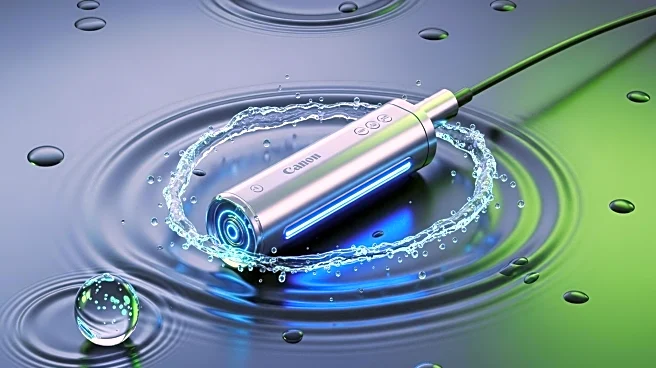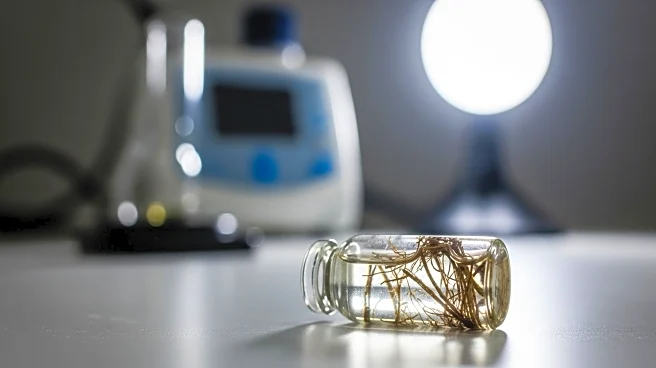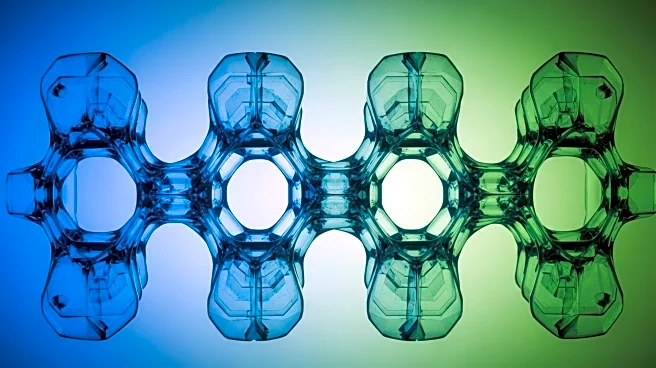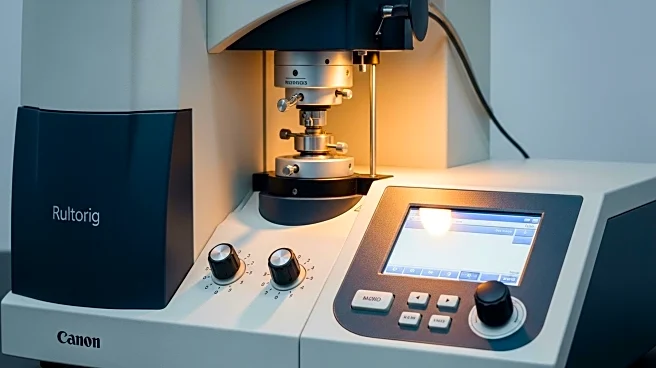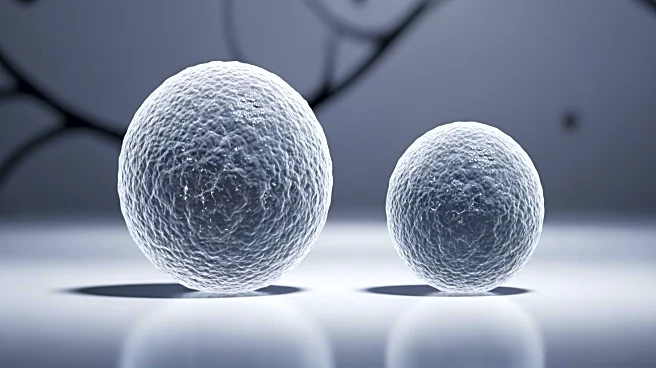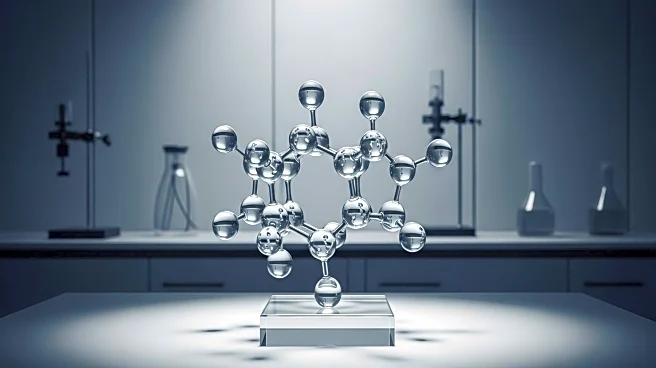What's Happening?
A new hybrid cuprous halide material, TPP3Cu2Br2, has been developed for luminescence lifetime thermometry, offering exceptional water resistance and high temperature sensitivity. This innovation addresses the longstanding challenge of balancing sensitivity and water stability in metal halide-based thermometers. The material's design integrates hydrophobic organic molecules with [Cu2Br2] dimers, enhancing its performance in humid environments. Traditional optical temperature measurement methods, which rely on photoluminescence intensity, often face interference from external factors like light source fluctuations and sample concentration changes. In contrast, PL lifetime-based methods offer advantages by reflecting the intrinsic properties of the material and its local environment, making them less susceptible to external influences. The new material exhibits a significant temperature-dependent luminescence lifetime change, driven by a TPP-induced soft lattice that undergoes substantial thermal expansion. This results in a dramatic reduction in luminescence lifetime, achieving high sensitivity and minimal error in underwater temperature sensing.
Why It's Important?
The development of TPP3Cu2Br2 marks a significant advancement in the field of temperature sensing, particularly for applications in humid or aqueous environments. Its ability to maintain luminescence intensity after prolonged water exposure makes it suitable for biomedicine and environmental monitoring. The material's high sensitivity and water resistance expand the scope of luminescent thermometers, allowing for accurate temperature monitoring in challenging conditions. This breakthrough could lead to more reliable and cost-effective temperature sensing solutions, reducing the need for complex detection systems. Industries that rely on precise temperature measurements, such as healthcare and environmental science, stand to benefit from this innovation, potentially improving diagnostic and monitoring capabilities.
What's Next?
The introduction of TPP3Cu2Br2 may prompt further research into hybrid materials that combine high sensitivity with environmental resilience. As the material demonstrates minimal error in underwater temperature sensing, it could lead to new applications in industrial and biological settings. Researchers may explore additional organic-inorganic hybrid structures to enhance performance in other challenging environments. The success of this material could drive interest in developing similar solutions for other optical sensing technologies, potentially leading to advancements in fields like medical imaging and environmental monitoring.
Beyond the Headlines
The integration of hydrophobic organic molecules into the material's structure not only improves water resistance but also highlights the potential of organic-inorganic hybridization in overcoming traditional material limitations. This approach may inspire new strategies for designing materials with tailored properties for specific applications. The ability to maintain performance in wet environments could lead to ethical considerations regarding the use of such materials in sensitive ecological areas, prompting discussions on sustainable and responsible deployment.
